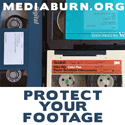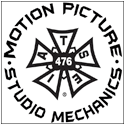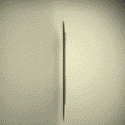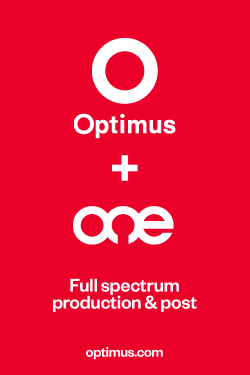
Media Burn — the only U.S. organization with its particular mission of preserving and access of independently produced, aristically significant work on videotape – celebrates its 10th anniversary Sept. 28, with a rooftop Video Ball atop the Wabash-Randolph parking garage.
SNL alum Nate Herman hosts the Video Ball, which is curated by Nick Fraccaro and Paul Durica of Pocket Guide to Hell. It features music by Mucca Pazza member Justin Amolsch’s Brass Inferno, an live auction and auction of art by Tom Palazzolo and Tony Fitzpatrick, “young Studs Terkels” conducting interviews, “and a few surprises from innovative documentary filmmakers,” says Sara Chapman, Media Burn’s executive director.
Chapman was a cinema and media studios undergrad at the University of Chicago in 2004 when she joined veteran documentary producer Tom Weinberg’s fledgling organization Media Burn.
 When Weinberg, a media activist and creator of Ch. 11’s independent film series Image Union, launched Media Burn in 2003, “many were skeptical that online video would become a significant part of life —- the screens were too small, the connections too slow,” Chapman says.
When Weinberg, a media activist and creator of Ch. 11’s independent film series Image Union, launched Media Burn in 2003, “many were skeptical that online video would become a significant part of life —- the screens were too small, the connections too slow,” Chapman says.
“Nevertheless, we plunged forward into what we knew would be the future, and began developing our streaming video website before YouTube launched and before mechanisms for delivering video over the Internet had been standardized or developed.
“At the time, many were skeptical that online video would never capture wide audiences. Now, 100 million Americans stream video every single day, on all sorts of screens, from HDTVs to laptops to smartphones,” she says.
An online archive of 2,500 hours of video
They began building a database of videotapes in 2004, began digitizing and uploading content in 2005, and officially launched mediaburn.org in 2006.
 From individual and volunteer support in the early days, Weinberg and Chapman built Media Burn into an established organization now funded by the Donnelly Foundation and the National Endowment for the Humanities, among others.
From individual and volunteer support in the early days, Weinberg and Chapman built Media Burn into an established organization now funded by the Donnelly Foundation and the National Endowment for the Humanities, among others.
Media Burn has an online archive of some 2,500 hours of otherwise-unseen video that has garnered 11 million views. They also maintain a physical library in their new River West office, with some 6,000 tapes and documents of independent media history.
Media Burn’s archive includes, at 300 tapes, the largest collection of Studs Terkel media. They’re just coming off a yearlong celebration of the trailblazing Chicago writer, radio, and TV producer and host’s centennial, with screenings and live events across the city
Among a vast array of work, they’ve also got the complete run of Weinberg’s PBS series The ‘90s, the films of Tom Palazzolo, and This Week in Joe’s Basement, documentarian Joe Winston’s (What’s the Matter with Kansas?) CAN TV public access series said to have inspired Wayne’s World.
The value of preserving endangered video
Weinberg and Chapman are working with Kartemquin Films to preserve 20 of Kartemquin’s unfinished and unseen labor documentaries from the ‘70s. “We hope to expand this collaboration significantly in coming years,” Chapman says.
“Public awareness of the fragility of film is fairly high,” Chapman says. “Most people are aware, for example, that the majority of films created in the silent era have been lost. However, very few people are aware of the vastly more endangered state of the entire videotape era.
“Film, while requiring care, can last for 100 years or more, and can be restored beautifully to its original condition. Videotape has a lifespan of only a few decades—sometimes as little as 10-15 years. It’s a problem that’s invisible until it’s too late…
“We plan to continue to expand our capacity to preserve Chicago’s media history as we race against time to save as many videotapes as we can,” Chapman says.
Tickets for the Video Ball, 5-8 p.m., are $75 through Sept. 27, $100 on Sept. 28, $25 for guests 25 and under.















